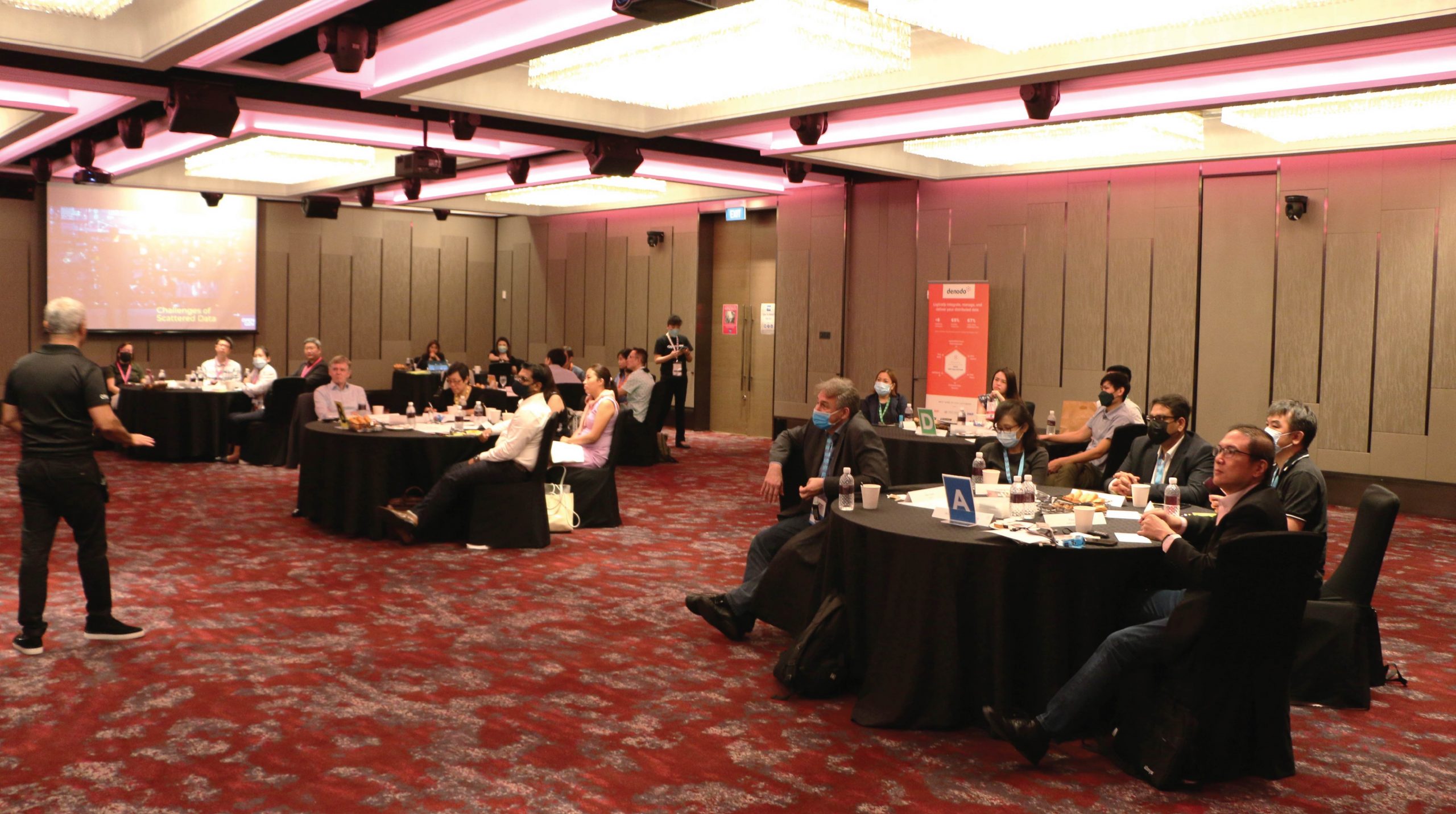
Both the public and the financial services sectors have made it their goal to serve their country by developing and establishing better policies. Policies that allow the integrated use of digital technologies and implementation of insight-driven choices and processes on time supported by data and automation.
Data is vital to all stakeholders in the digital age, and it will only increase in value as a commodity as businesses ramp up their digital offerings.
However, the public sector and financial services struggle to realise the full value of their data and frequently have difficulties integrating it due to high prices, duplicated data across numerous locations, ageing systems and a lack of interoperability and real-time data access.
Organisations in both the public and private sectors have spread their data across a variety of on-premises and cloud sources, with each serving a different function. As a result, after gathering data from various sources, they must replicate it in a new physical location, requiring time and resources away from crucial reporting activities.
Because of these issues, organisations are less efficient and effective and have a lot of data but little insight.
The OpenGov Breakfast Insight on 15 July 2022 convened digital executives from Singapore to discuss how data-as-a-service can help organisations improve their use of technology to make better decisions.
The Impact of Digitalisation on Business Growth

To kickstart the session, Mohit Sagar, CEO and Editor-in-Chief, OpenGov Asia, delivered the opening address. He believes that organisations cannot afford to rely on yesterday’s methods to address today’s issues. This calls for the use of cutting-edge data management and integration tools while maintaining data sovereignty.
“Organisations will be better able to harness the power of data and accomplish their goals if they have a solid data integration strategy in place,” says Mohit. “Moreover, embracing agility to improve efficiency and cut costs could lead to a complete and cost-effective digital transformation.”
He adds that businesses must repurpose their resources in a way that enables them to create an interoperable, connected data landscape where all user-collected data is readily available where it is needed. In doing so, security and privacy would be protected and sufficient to deal with any legal, technical, or organisational challenges that could lead to data misuse.
Additionally, a Data Fabric, which enables safe and controlled data exchange while maintaining an organisational level of control over what data is shared and with whom, is the key to a data ecosystem.
However, this brings up several issues and clarity are needed on the importance of a Data Fabric in terms of how an organisation can:
- Ensure that the entire data ecosystem is accessible on-demand without replication;
- Maintain security while sharing data across agencies: and
- Deliver data in any format in real-time while keeping the costs low.
There are still problems in many parts of the financial and public sectors in terms of accessing a huge amount of information on clients, such as high costs, duplicated data in many places, older systems that don’t work well together and don’t have access to real-time data and lack of centralisation.
He urges organisations to turn unstructured data into structured data to gain insights that will help them make better decisions, and by using comprehensive data integration, an organisation could give great services and might be able to run data queries quickly to help their stakeholders.
“The key to this data environment is to enable safe and regulated data sharing while maintaining organisational control over what data is exchanged and with whom and the best way to accomplish this is to find the right technology partner,” Mohit advises.
One Logical Platform for All Data

Depending on their requirements, organisations must select from a variety of data management systems and databases, according to Paul Moxon, SVP Data Architectures & Chief Evangelist, Denodo. “A lot can go wrong on a day-to-day basis if proper infrastructure is not in place.”
When a hard drive needs to be replaced or a patch upgrade fails, businesses with on-premises solutions may experience more unplanned downtime than anticipated. On the other hand, if the data remains siloed rather than consolidated into a data warehouse, the analyst may spend a significant amount of time manually blending data, reducing overall efficiency.
“Data and its associated infrastructure are constantly evolving for every organisation. As a result, business data will always be distributed,” explains Paul.
The Denodo Platform enables IT organisations to evolve their data strategies, migrate to the cloud, or logically unify data warehouses and data lakes without disrupting business operations.
That is why it is critical to ensure that the appropriate data infrastructure has met the primary business goals. Hence, a solid data analytics infrastructure strategy ensures increased efficiency and productivity, facilitates collaboration and allows businesses to easily access information from anywhere if the proper authentication steps are in place.
Reducing operational costs, increasing focus on core competencies, and increasing efficiency through process analysis and improvement are some of the advantages of a proper data management system.
The Denodo Platform speeds up data provisioning by reducing data replication, provides consistent security and governance across multiple systems, and allows your business users to choose their preferred applications. Hence, a logical data fabric is needed that is powered by data virtualisation that can only be found in the Denodo Platform.
Fireside Chat: Approach to data integration that helps organisations find answers, accomplish their objectives, and reduce expenses.
 In a data-driven organisation, data science expertise is not and should not be restricted to a select few data specialists. All employees will eventually work with data applications; thus, they should be involved in the transition process because they will need to acquire training appropriate to their level or even in their daily life.
In a data-driven organisation, data science expertise is not and should not be restricted to a select few data specialists. All employees will eventually work with data applications; thus, they should be involved in the transition process because they will need to acquire training appropriate to their level or even in their daily life.
According to Tung Whye Loon, Director, Data, AI & Research (SP Digital), SP Group, the success of data-driven decision-making will increase as more individuals become aware of its benefits. This “demands a systematic approach that monitors the required Dataset, Toolset, Skillset, and Mindset.”
Data in the digital age enables people and customers to receive assistance. To securely integrate data, businesses must use advanced analytics and find solutions to optimise operations for long-term use. Efforts are being made by both the public and business sectors to recognise the worth of their data.
Paul believes, “If you have an organisation that encourages experimentation and allows people to fail, you will get more innovation and drive.”
Besides, many companies still don’t have a strong, data-driven culture, and data isn’t always the best way to make decisions. The biggest problems with making businesses based on data are not technical but cultural.
Nonetheless, enterprise data is dispersed among various on-premises and cloud sources, each serving a specific operational area. As a result, organisations become data-rich but insight-poor, which hinders their efficiency and effectiveness.
Companies with strong data-driven cultures usually have leaders who make it clear that decisions should be based on facts. Big data could be hard to understand and complicated. But companies that create systems and methods to collect, analyse and use data will see results in several different areas.
One way to get the most out of data science integration is to treat it like a consulting project. With an intelligent, data-driven approach, businesses get a unique view of their operations and customers, which helps them improve business strategy, improve operations, and embrace digital transformation.
This digital transformation makes it possible for business leaders to use technology all over their businesses and make big changes that take their businesses to the next level.
In real life, this applies to a wide range of situations, such as when AI and cloud computing are used to improve the customer experience or when companies digitise their supply chains to feed data into machine learning.
A solid data strategy can be an organisation’s best asset when it comes to bridging the gap between business strategy and implementation. Even though the exact reasons for these failures are many and varied – like poor communication, lack of buy-in and lack of clarity – they all boil down to one problem: there is a disconnect between planning and implementation.
While top management may have spent a lot of time and energy coming up with business goals and the strategies that support them, it takes the combined efforts of everyone in the organisation to make those goals come true.
The data strategy tells those who implement the strategy step-by-step what to do. This gives them the power to make decisions and take actions that move the organisation closer to its goals.
When data is accessed and shared, people, companies and governments all face similar problems. The main obstacle that organisations or events must overcome for policymakers is to enable and promote improved access and sharing.
Weighing the dangers and rewards of increased data access while considering genuine individual, national and public interests is essential. For this, unreasonable impediments to cross-border data transfers may need to be removed.
Through proactive stakeholder interactions, community building and trust-building, it is possible to promote data sharing and help maximise the value of data re-use. The development of data-related skills, infrastructure and standards as well as maintaining community engagement may incur large expenses.
While recognising the limitations of (data) marketplaces, encouraging the availability of data through sensible incentive structures and viable business models. To do this, it may be necessary to clarify privacy obligations, the role of intellectual property rights (IPRs), and other rights that are like ownership. These tasks should ideally be handled by the relevant expert agencies and organisations.
Interactive Discussion
After the informative discussion, delegates participated in poll-based conversations. This session is meant to provide live audience engagement, stimulate participation, and provide individuals with real-world experiences that could help in their professional development.
When asked to rate how well their company uses analytics and data to make decisions, a majority answered fair and good as they use some data and tools in their decision-making process, although analysis is primarily a manual process.
Data analytics enables comprehension of the employees’ and customers’ interactions and collaboration with the IT and marketing departments to improve them. As a result, the company can better allocate budgets based on customer feedback.
The top motivator for data sharing within the organisation was improving the speed and accuracy of business decisions.
Improving the decision-making process is well worth the effort and will be beneficial if the organisation adopts an agile attitude, enabling it to move forward with modest steps and get test-and-learn insights that will speed up decision-making.
In the third poll, most delegates indicated compliance with data security and privacy requirements as the biggest obstacle to data sharing within the organisation.
The delegates were unified in their belief that a complying organisation implements robust administrative, technical and physical security measures to protect the confidentiality, integrity and availability of data. This includes the capability to effectively detect and block illegal or inappropriate data access.
On what their current data strategy is, most said that they are migrating their selected data to the cloud and are in the process of migrating data and applications to the cloud.
An enterprise can perform various types of cloud migrations, one of which is to transfer data and applications from a local on-premises data centre to the public cloud.
The separation between IT and business was cited by the delegates as the largest obstacle to advancement in their organisation’s data journey. Because there is a disconnect between business and IT, organisations do not include long-term IT innovation in their annual business planning. They favour resolving current problems.
Inquiring as to how their usage of data and analytics would alter over the next two to four years by adding AI/ML analytics to their decision-making, delegates believe that both private and public sectors can foresee and make optimal judgments using decision-making driven by AI and ML.
Closing Remarks
Mohit encouraged the delegates to put their data into the cloud because “the cloud database reduces overhead expenses. It enables the company to devote additional resources and time to improve its infrastructure.”
Since cloud databases have very little downtime and are the most efficient recovery plan, they can provide more accurate retrieval of data and applications. He feels that a successful digital transformation leader must be well-versed in a wide range of details. They must have a strong bond with and understanding of the customer. They must also appreciate the company’s business model, business processes, as well as supporting technology.
 “Data is valuable, but if unrefined, it cannot really be used. Undoubtedly, having mindset flexibility in the building data structure is important,” says Alex Hoehl, Regional Vice President, ASEAN & Korea, Denodo.
“Data is valuable, but if unrefined, it cannot really be used. Undoubtedly, having mindset flexibility in the building data structure is important,” says Alex Hoehl, Regional Vice President, ASEAN & Korea, Denodo.
To keep up with the huge amount of generated data, it needs to be properly managed and stored. This assertion should encourage businesses to think that their data is an asset. Therefore, proper management is a prerequisite for both ensuring trust as well as for incorporation into business processes. Consequently, it should become clear why data management applies not only to the IT department but represents a structural issue for an entire company.
A logical data fabric is a single platform for delivering data that hides complexity and access to different data systems but exposes data in formats that are easy for businesses to use. It also makes sure that data is delivered according to semantics and data governance rules that have already been set.
Data virtualisation enables the logical data fabric vision. Organisations will find one of the Denodo subscriptions has the right features and functionalities to fit the enterprises’ budget and needs, whether they’re looking for data integration and management solution for a simple project like dashboarding or reporting, or a complex project.
In conclusion, Alex points out that the Denodo subscriptions have the right features and functions to match the businesses’ budget and demands, “Whether you need dashboarding, reporting, data management in hybrid or multi-cloud settings or prescriptive or predictive analytics, Denodo can serve your needs!”
















